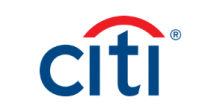The China position: Gauging institutional investor confidence
Related content

Infographic: The China position
China has now emerged as the world’s largest economy by purchasing power parity and is a market that investors cannot ignore. To learn more about the confidence level of institutional investor and asset owner organisations in China and the opportunities and concerns over the next 12 months, click here to download the full report.

The shifting landscape of global wealth: Future-proofing prosperity in a ti...
In some instances the impact of this shift will be shaped by local factors, such as demographic changes. In other instances this shift will reflect shared characteristics, as demonstrated by the greater popularity of overseas investing among younger high-net-worth individuals (HNWIs) brought up in an era of globalisation. Whatever the drivers, the landscape of wealth is changing—from local to global, and from one focused on returns to one founded on personal values.
Despite rising economic concerns and a tradition of investor home bias in large parts of the world, the new landscape of wealth appears less interested in borders. According to a survey commissioned by RBC Wealth Management and conducted by The Economist Intelligence Unit (EIU), younger HNWIs are substantially more enthusiastic about foreign investing. The U.S. is a particularly high-profile example of a country where a long-standing preference for investments in local markets appears set to be transformed.
Click the thumbnail below to download the global executive summary.
Read additional articles from The EIU with detail on the shifting landscape of global wealth in Asia, Canada, the U.S. and UK on RBC's website.

Fintech in ASEAN
To better understand the opportunities and challenges in developing a fintech business in seven ASEAN markets, The Economist Intelligence Unit conducted wide-ranging desk research supplemented by seven in-depth interviews with executives in Australia and ASEAN.
Download report and watch video interview to learn more.
Long-term planning can help allay Canadian investors’ concerns for the future
Planning is crucial in boosting financial well-being and protecting wealth
Key findings
17301
Related content

The shifting landscape of global wealth: Future-proofing prosperity in a ti...
In some instances the impact of this shift will be shaped by local factors, such as demographic changes. In other instances this shift will reflect shared characteristics, as demonstrated by the greater popularity of overseas investing among younger high-net-worth individuals (HNWIs) brought up in an era of globalisation. Whatever the drivers, the landscape of wealth is changing—from local to global, and from one focused on returns to one founded on personal values.
Despite rising economic concerns and a tradition of investor home bias in large parts of the world, the new landscape of wealth appears less interested in borders. According to a survey commissioned by RBC Wealth Management and conducted by The Economist Intelligence Unit (EIU), younger HNWIs are substantially more enthusiastic about foreign investing. The U.S. is a particularly high-profile example of a country where a long-standing preference for investments in local markets appears set to be transformed.
Click the thumbnail below to download the global executive summary.
Read additional articles from The EIU with detail on the shifting landscape of global wealth in Asia, Canada, the U.S. and UK on RBC's website.

Fintech in ASEAN
To better understand the opportunities and challenges in developing a fintech business in seven ASEAN markets, The Economist Intelligence Unit conducted wide-ranging desk research supplemented by seven in-depth interviews with executives in Australia and ASEAN.
Download report and watch video interview to learn more.

Risks and opportunities in a changing world
Read our Taxing digital services, U.S. tax reform: The global dimension, & Planning for life after NAFTA articles by clicking the thumbnails below.
Related content

Steering through collaboration: CFOs driving new priorities for the future
It is well established that the modern CFO has a more strategic role to play in a business, but a clear action plan to achieve this is lacking. A key element of this is helping the business to deal with change. Some changes are planned: launching a new product or service, setting up operations in a new region or acquiring a competitor. Others may be unexpected: a major disruption to supply-chain operations, the emergence of new regulation and legal reporting requirements or the unpredictable impacts of global economic uncertainty.
Either way, when asked about the biggest challenges they face in executing their day-to-day activities, change is a recurring theme, according to a new survey of 800 CFOs and senior finance executives, conducted by The Economist Intelligence Unit. Managing unexpected changes to financial forecasts and adapting finance processes to rapidly evolving business models are top of mind.
Managing unexpected changes to financial forecasts and adapting finance processes to rapidly evolving business models are top challenges finance executives face in executing their day to-day activities.
Finance executives are also concerned with identifying how to align strategic, financial and operational plans towards common objectives and meaningfully analysing data across business units and regions. “All functions are working to meet these challenges and, as a finance head, we have to have visibility across all functions, how they are progressing [towards meeting goals] and ensuring that their direction is in line with overall strategic goals,” says Lalit Malik, CFO of Dabur, an Indian consumer goods manufacturer. It is incumbent upon CFOs therefore to be prepared not only to help their own function navigate uncharted territory, but the rest of the business too. That means breaking down the silos that commonly exist in organisations, in order to collaborate closely across functions, sharing information and data in the pursuit of common objectives.
All functions are working to meet these challenges and, as a finance head, we have to have visibility across all functions, how they are progressing [towards meeting goals] and ensuring that their direction is in line with overall strategic goals - Lalit Malik, CFO of Dabur, an Indian consumer goods manufacturer.
The clear custodian of collaboration
There are a number of reasons why the role of leading cross-company collaboration around steering should fall to the CFO and their team. First, through the activities of budgeting, the finance function is the custodian of the clear, quantitative expression of management expectations and determines how resources such as cash and people will be allocated in order to achieve them. In our survey, 90% of respondents say that finance should facilitate collaborative enterprise planning to ensure that operational plans are aligned with financial and strategic plans.
Second, through performance management, the finance function is the gatekeeper for critical data that illustrate how well—or otherwise—the company is rising to the challenge of change. That includes data relating to sales, supply chain and delivery, which need to be reported back to the business in ways that help drive improved decisionmaking. Our survey reveals that companies in which finance executives feel empowered to drive strategic decisions across business functions are more likely to report a higher financial performance in fiscal year 2016/17 and 2017/18 and anticipate higher growth rates for 2019/20.
Download Complete Executive Summary PDF

Transforming data into action
As businesses generate and manage vast amounts of data, companies have more opportunities to gather data, incorporate insights into business strategy and continuously expand access to data across the organisation. Doing so effectively—leveraging data for strategic objectives—is often easier said than done, however. This report, Transforming data into action: the business outlook for data governance, explores the business contributions of data governance at organisations globally and across industries, the challenges faced in creating useful data governance policies and the opportunities to improve such programmes. Learn more by downloading our whitepaper below.

Rethinking professional services in an age of disruption
EIU study finds big data dividends for corporate travel managers in Asia Pacific
Related content

Disruption hub: Landing innovation in Asia’s corporate travel industry
This report explores the impact of digitisation and wider travel industry change on how companies manage corporate travel in the APAC region.
For most travel managers, however, the impact of digital change is hugely positive. Employees using their mobile devices for all manner of transactions, approved or otherwise, may be disquieting to some, but the research conducted for this Economist Intelligence Unit study shows that digitisation is also bringing more standardisation as well as control and monitoring capabilities than had existed previously. It is also creating unprecedented opportunities to understand employee travel and spending behaviours and adapt travel and entertainment (T&E) conditions accordingly.
Key findings:
Digitisation, automation and analytics are combining to give companies in the region the ability to manage staff travel much more efficiently Many firms accord employees considerable autonomy to book travel, but 40% report a significant increase in corporate travel costs as a result The biggest challenge in granting autonomy is ensuring employee safety, say 31% of survey respondentsThis report is based on a survey of 210 travel managers and other senior executives in Asia Pacific, as well as in-depth interviews with travel managers and other industry experts.
The value of the data being generated is such that companies prefer to analyse it internally, rather than outsource analysis. Travel managers obtain transaction data from a wide variety of sources today, including their travel management companies (TMCs), but managers often struggle to get consolidated data from any one external partner, say interviewed executives.
Digitisation, while giving employees more options to book travel and pay expenses in different ways, is also enabling companies to make travel policy more specific and to ensure tighter compliance and cost control, the study finds. Similarly, the detailed data now available to companies enhances their ability to ensure employee safety when travelling.
The report also finds considerable innovation in payment practices in the region. E-wallets, mobile payment apps and virtual cards, for example, are coming into wider use. At the same time, T&E is becoming more tightly controlled, thanks partly to the wider use of corporate cards. At over 60% of surveyed firms, the latter is the main method used to procure airlines and hotels and pay in-travel expenses.

The Future of Air Travel
In the coming decade, airlines will have the opportunity to transform themselves from commoditised providers of transportation to full-trip coordinators that interact in an integral, more profitable way with travellers during every step of their journeys. To do so, airlines will have to improve the customer experience, revive brand loyalty and undo the effects of years of cost-cutting.
To gain greater insight into the innovations that could usher in this new era for travellers, The EIU surveyed more than 100 airline executives and 800 passengers, in addition to conducting in-depth interviews with 16 industry leaders and observers. This research series, sponsored by Sabre Airline Solutions, confirms that customers want a more personalised and satisfying experience and that airline executives want more sustainable profit margins. Fortunately, these goals can be attained together.
The winners will be those [airlines] that are able to provide more customer-centric and personalised service.
-Nawal Taneja, Professor emeritus at Ohio State University’s Center for Aviation StudiesResearch methodology
The EIU conducted parallel surveys of 100 airline executives and 810 air travel customers in August and September of 2013. Half of the executives hold C-level positions, with the rest being SVPs, VPs or directors. The regions of North America, Asia-Pacific and Europe are equally represented with 30% each, while Latin America, the Middle East and Africa make up the remaining 10% of responses.
About one-third of the companies represented in the survey report US$1bn or less in annual global revenue, while 29% boast revenue of US$5bn or more. Participants in the consumer survey were screened to include only individuals over 20 years of age who had travelled by air in the previous 12 months; the gender balance was near-equal (53% male and 47% female), with respondents spread across 18 different countries.
In an effort to better understand the issues facing airlines today, The EIU also conducted in-depth interviews with 16 industry leaders and observers. We’d like to take this opportunity to thank all those who shared their time and insights.

Golden rules of the travel tech space race
Simon Vincent, EMEA President of Hilton Worldwide, outlines his two Golden Rules of the Travel Tech Space Race ahead of The Economist’s Future of Travel event on March 24th.
The last time you went abroad – did you check in to your flight online? It’s a service we take for granted to such a degree today that it barely warrants mention. But what about your hotel?
I’ve no doubt that Michael O’Leary and Tony Tyler, my co-panellists at The Future of Travel Summit will be at pains to stress the advances in technology that aviation has made compared to us hoteliers.
But with the lodging sector now buzzing with activity in this space I’m confident we’re going the right way about catching up. We’ve seen all manner of gadgets hit the headlines in recent months from Google Glass concierges at The Fairmont in San Francisco, to the proposed Henn-na hotel in Japan which will be entirely staffed by robots to Hilton’s own roll out of digital check in and room selection.
The onset of this ‘travel tech space race’ raises the question of the role we want technology to play in evolving our industry. The future of our businesses depends on us getting these choices right – following these two ‘golden rules’ of innovation:
Create a seamless travel experienceDespite the incredible advances technology has made in opening up the globe, in many ways it has also created a world where it has never been easier not to travel. Meetings can be skyped, presentations can become webinars and even once in a lifetime sightseeing trips can now be partially delivered from the comfort of your own home via virtual reality.
That puts the onus firmly on us to ensure we use technology to make every aspect of the travel experience as appealing as possible. In hotels that could mean anything from eliminating queues at check in, to customising rooms via apps, but it is a responsibility we all share through each stage of the journey. Gone are the days when inconvenience was an acceptable by-product of necessity.
Facilitate extraordinary serviceHistory tells us that with every technological advance, from the printing press to the production line, comes an opportunity to exploit efficiency. Travel is no different in constantly looking to newer systems to improve our operations.
However, in doing so, we must continue to hold sacred the principle of people serving people and avoid turning a desire for convenience into a devaluation of customer service. Digital advancements shouldn’t serve to make staff obsolete, but to free them from the shackles of paperwork to become ambassadors for the hotels and communities in which they work and live, creating memorable experiences for guests.
I believe hotels are more than mere places of accommodation. Enriching lives through human interaction is the essence of our business, something technology should help achieve but never replace.
The views and opinions expressed in this article are those of the authors and do not necessarily reflect the views of The Economist Intelligence Unit Limited (EIU) or any other member of The Economist Group. The Economist Group (including the EIU) cannot accept any responsibility or liability for reliance by any person on this article or any of the information, opinions or conclusions set out in the article.
Disruption hub: Landing innovation in Asia’s corporate travel industry
This report explores the impact of digitisation and wider travel industry change on how companies manage corporate travel in the APAC region.
Related content

Three ingredients to make seamless travel happen
Seamless travel is a strong aspiration in human mobility. Today, our opportunities for travel are almost infinite. We can go practically everywhere, and often at quite low prices. But too often, getting from A to B remains more of a hassle than a real pleasure. This is especially true when travelling to less familiar places, where the challenge of understanding the options adds to the connection difficulties.
Seamless transport is not only about comfort. It is as much about economic growth or social inclusion. Getting semi-finished products just-in-time to the assembly line reduces capital costs. Linking up public transport in intelligent and fully accessible and intelligible ways may make the difference for someone being able to take a job as well as for someone visiting a foreign country.
’Seamless‘, after all, is just another way of saying that mobility is more efficient, anxiety-free against disruption. It means making people confident that they will be able to easily find and use the best travel option. It means ensuring that service disruptions in one component will be promptly addressed to minimise the impact on the user, with the help of all the other components. This should be a boon to all involved: users, operators, regulators, and investors, even insurers and society at large.
So if seamless mobility is the Holy Grail everyone is looking for, why isn’t it widely available?
Conventional wisdom holds that digital technology, by allowing unprecedented levels of information exchange in real time, will solve the co-ordination issue that is the crux for seamlessness. It is undeniable: big data on the servers of operators and smart phones in the pockets of users are a potentially powerful combination. Some of the benefits are already there and we can surely expect much more—for instance making it easier for foreign visitors to access travel information through translation and interpretation help.
Putting high tech at the core of our thinking about better mobility solutions is tempting. Transport certainly has a long history of focusing on technological innovation and now it is embracing digital technology with gusto.
Ultimately though, transport is not about technology and what it can do. It is about people and what they want to do. It should build on business models and behavioural patterns that make sense for companies, organisations and people involved. Technology is a powerful enabler but it won’t be enough to ensure seamless travel.
Even that very useful app on your smartphone is only the shiny tip of an iceberg. Underneath lies an invisible and complex structure of standards and regulations. Getting the support structure right can make or break innovative solutions as easily as demand. Sometimes seamless travel doesn’t happen because some outdated regulation simply prohibits an innovative practice, or because one element which makes sense from a holistic perspective is seen only as an additional cost by each of the partial service providers in the travel chain.
Agile, high-end regulation is vital for better physical connectivity. Good regulators will not just manage the status quo. They will also identify the ’missing links‘ (services to users or contractual arrangements between service providers) in seamless integration, and find ways to include those links in the regular scheme of things. We need savvy policy-makers and regulators as much as nerdy programmers.
So here, in a nutshell, is my three-ingredient seamless transport recipe for you to ponder: 1. Think of the user first and last; 2. Consider the enablers—high tech, low tech or other; 3. Ensure a sophisticated and agile regulatory response to customer requirements and technological opportunity.
The views and opinions expressed in this article are those of the authors and do not necessarily reflect the views of The Economist Intelligence Unit Limited (EIU) or any other member of The Economist Group. The Economist Group (including the EIU) cannot accept any responsibility or liability for reliance by any person on this article or any of the information, opinions or conclusions set out in the article.

Golden rules of the travel tech space race
Simon Vincent, EMEA President of Hilton Worldwide, outlines his two Golden Rules of the Travel Tech Space Race ahead of The Economist’s Future of Travel event on March 24th.
The last time you went abroad – did you check in to your flight online? It’s a service we take for granted to such a degree today that it barely warrants mention. But what about your hotel?
I’ve no doubt that Michael O’Leary and Tony Tyler, my co-panellists at The Future of Travel Summit will be at pains to stress the advances in technology that aviation has made compared to us hoteliers.
But with the lodging sector now buzzing with activity in this space I’m confident we’re going the right way about catching up. We’ve seen all manner of gadgets hit the headlines in recent months from Google Glass concierges at The Fairmont in San Francisco, to the proposed Henn-na hotel in Japan which will be entirely staffed by robots to Hilton’s own roll out of digital check in and room selection.
The onset of this ‘travel tech space race’ raises the question of the role we want technology to play in evolving our industry. The future of our businesses depends on us getting these choices right – following these two ‘golden rules’ of innovation:
Create a seamless travel experienceDespite the incredible advances technology has made in opening up the globe, in many ways it has also created a world where it has never been easier not to travel. Meetings can be skyped, presentations can become webinars and even once in a lifetime sightseeing trips can now be partially delivered from the comfort of your own home via virtual reality.
That puts the onus firmly on us to ensure we use technology to make every aspect of the travel experience as appealing as possible. In hotels that could mean anything from eliminating queues at check in, to customising rooms via apps, but it is a responsibility we all share through each stage of the journey. Gone are the days when inconvenience was an acceptable by-product of necessity.
Facilitate extraordinary serviceHistory tells us that with every technological advance, from the printing press to the production line, comes an opportunity to exploit efficiency. Travel is no different in constantly looking to newer systems to improve our operations.
However, in doing so, we must continue to hold sacred the principle of people serving people and avoid turning a desire for convenience into a devaluation of customer service. Digital advancements shouldn’t serve to make staff obsolete, but to free them from the shackles of paperwork to become ambassadors for the hotels and communities in which they work and live, creating memorable experiences for guests.
I believe hotels are more than mere places of accommodation. Enriching lives through human interaction is the essence of our business, something technology should help achieve but never replace.
The views and opinions expressed in this article are those of the authors and do not necessarily reflect the views of The Economist Intelligence Unit Limited (EIU) or any other member of The Economist Group. The Economist Group (including the EIU) cannot accept any responsibility or liability for reliance by any person on this article or any of the information, opinions or conclusions set out in the article.
Video: Building a data driven Treasury
Related content

A Quantum Leap: Building a data driven treasury
About this research
A Quantum Leap: Building a data-driven treasury is an Economist Intelligence Unit report, commissioned by Deutsche Bank. Our analysis explores what it means to be a data-driven treasury, the factors motivating the transition and key considerations when developing a data strategy. The study identifies technologies that treasurers are currently using and those they believe will be most important in enhancing their data intelligence moving forward.
The report is based on a survey of 300 senior corporate treasury executives conducted between May and July 2019. Of these, a third represents companies with an annual revenue of at least US$5bn. Executives were drawn from three regions (North America, AsiaPacific, and Europe, Middle East and Africa) and a broad range of sectors, including aerospace/defence (2.3%); agriculture and agribusiness (4%); automotive (7.6%); chemicals (6.6%); construction and real estate (5.6%); consumer goods (7%); energy and natural resources (7%); entertainment, media and publishing (6.3%); financial services (7.6%); healthcare, pharmaceuticals and biotechnology (7.3%); IT and technology (7%); logistics and distribution (4.7%); manufacturing (8.3%); professional services (1.7%); retailing (5%); telecommunications (7%); and transport, travel and tourism (4.7%).
As part of our research, we conducted a series of in-depth interviews in July and August 2019 with senior treasury executives from around the world. Our thanks are due to the following for their time and insight (listed alphabetically):
Richard Abigail, group treasurer, Arup Rando Bruns, head of group treasury, Merck KGaA Charles Cao, treasurer, Ant Financial Takachida Kuhudzai, EMEA treasury manager, Kimberly Clark Wolfgang Ratheiser, VP finance and treasury, Porsche Vishal Verma, executive, cash and treasury services, GEExecutive summary
As digitalisation across businesses advances, vast amounts of data generated in these systems present an opportunity for the treasury function. Harnessing the data can deliver smarter insights and enable faster decision-making. But becoming data-driven doesn’t happen overnight. It is a journey that will take many years, and companies are at different stages of this journey. Along the way, treasurers encounter numerous challenges, from complexity of data integration to a lack of data skills among members of their teams.
So that treasurers can identify how far along they are on this journey, our report looks at three different phases: the past, the present and the future. The first chapter discusses the digitalisation that has taken place in treasury departments and the opportunity treasurers have identified to become more data driven. The second explores priorities when developing a data strategy. The final chapter examines emerging technologies that could enhance treasury’s data intelligence.
Key findings
Becoming data-driven reinforces the treasurer’s role in driving business efficiency, but also as a profit centre. Treasurers say the primary benefits to becoming more data-driven would be higher operational efficiency (39%) and improved return on investments/assets (36%). Data intelligence can also help treasurers to navigate increasingly complex regulation, such as International Financial Reporting Standards 9 and General Data Protection Regulation. Treasury functions with a high volume of transactions or those with information spread across subsidiaries will benefit most from a data strategy. The treasury functions most in need of a data strategy are investments (29%), cash flow forecasting (25%), and exposure identification and measurement (24%), respondents believe. Accurate data on payments and receivables (values and due dates) are required to identify cash locked in different parts of the business, which can be directed towards short-term investments. Four in ten treasurers are very concerned about the quality of the data they are working with. Furthermore, the survey provides evidence that those treasurers who are more involved in compiling data and those who have investigated a data-driven approach in depth are more likely to have grave concerns about quality. Treasurers seek unstructured data to improve the quality of their analysis. When data are pooled from multiple ERP systems and other sources, it may be standardised for use across different parts of the business. For treasury, such standardisation runs counter to the data-driven approach, as it conceals important nuances in the data. Technologies that aggregate data and those with advanced processing capabilities will enhance a company’s data intelligence. Respondents indicate that cloud computing will be the most important technology for treasurers over the next five years (44%), followed by big data analytics (42%) and artificial intelligence (37%). Interestingly, robotic process automation—considered popular among finance professionals—was cited by only 9% of respondents: treasurers say it facilitates automation more than data analysis. The complexity of integrating datasets and the cost of external data are critical roadblocks to becoming a data-driven treasury. As open banking develops, application programming interfaces offer a way to seamlessly link cash information from bank accounts to a company’s cash flow model, enhancing the timeliness and quality of data.For a compelling summary of the key findings of our research, view our animated infographic here.

Steering through collaboration: CFOs driving new priorities for the future
It is well established that the modern CFO has a more strategic role to play in a business, but a clear action plan to achieve this is lacking. A key element of this is helping the business to deal with change. Some changes are planned: launching a new product or service, setting up operations in a new region or acquiring a competitor. Others may be unexpected: a major disruption to supply-chain operations, the emergence of new regulation and legal reporting requirements or the unpredictable impacts of global economic uncertainty.
Either way, when asked about the biggest challenges they face in executing their day-to-day activities, change is a recurring theme, according to a new survey of 800 CFOs and senior finance executives, conducted by The Economist Intelligence Unit. Managing unexpected changes to financial forecasts and adapting finance processes to rapidly evolving business models are top of mind.
Managing unexpected changes to financial forecasts and adapting finance processes to rapidly evolving business models are top challenges finance executives face in executing their day to-day activities.
Finance executives are also concerned with identifying how to align strategic, financial and operational plans towards common objectives and meaningfully analysing data across business units and regions. “All functions are working to meet these challenges and, as a finance head, we have to have visibility across all functions, how they are progressing [towards meeting goals] and ensuring that their direction is in line with overall strategic goals,” says Lalit Malik, CFO of Dabur, an Indian consumer goods manufacturer. It is incumbent upon CFOs therefore to be prepared not only to help their own function navigate uncharted territory, but the rest of the business too. That means breaking down the silos that commonly exist in organisations, in order to collaborate closely across functions, sharing information and data in the pursuit of common objectives.
All functions are working to meet these challenges and, as a finance head, we have to have visibility across all functions, how they are progressing [towards meeting goals] and ensuring that their direction is in line with overall strategic goals - Lalit Malik, CFO of Dabur, an Indian consumer goods manufacturer.
The clear custodian of collaboration
There are a number of reasons why the role of leading cross-company collaboration around steering should fall to the CFO and their team. First, through the activities of budgeting, the finance function is the custodian of the clear, quantitative expression of management expectations and determines how resources such as cash and people will be allocated in order to achieve them. In our survey, 90% of respondents say that finance should facilitate collaborative enterprise planning to ensure that operational plans are aligned with financial and strategic plans.
Second, through performance management, the finance function is the gatekeeper for critical data that illustrate how well—or otherwise—the company is rising to the challenge of change. That includes data relating to sales, supply chain and delivery, which need to be reported back to the business in ways that help drive improved decisionmaking. Our survey reveals that companies in which finance executives feel empowered to drive strategic decisions across business functions are more likely to report a higher financial performance in fiscal year 2016/17 and 2017/18 and anticipate higher growth rates for 2019/20.
Download Complete Executive Summary PDF

Transforming data into action
As businesses generate and manage vast amounts of data, companies have more opportunities to gather data, incorporate insights into business strategy and continuously expand access to data across the organisation. Doing so effectively—leveraging data for strategic objectives—is often easier said than done, however. This report, Transforming data into action: the business outlook for data governance, explores the business contributions of data governance at organisations globally and across industries, the challenges faced in creating useful data governance policies and the opportunities to improve such programmes. Learn more by downloading our whitepaper below.
A Quantum Leap: Building a data driven treasury
About this research
A Quantum Leap: Building a data-driven treasury is an Economist Intelligence Unit report, commissioned by Deutsche Bank. Our analysis explores what it means to be a data-driven treasury, the factors motivating the transition and key considerations when developing a data strategy. The study identifies technologies that treasurers are currently using and those they believe will be most important in enhancing their data intelligence moving forward.
Related content

Video: Building a data driven Treasury
For a compelling summary of the key findings of our research, view our animated infographic here.

Steering through collaboration: CFOs driving new priorities for the future
It is well established that the modern CFO has a more strategic role to play in a business, but a clear action plan to achieve this is lacking. A key element of this is helping the business to deal with change. Some changes are planned: launching a new product or service, setting up operations in a new region or acquiring a competitor. Others may be unexpected: a major disruption to supply-chain operations, the emergence of new regulation and legal reporting requirements or the unpredictable impacts of global economic uncertainty.
Either way, when asked about the biggest challenges they face in executing their day-to-day activities, change is a recurring theme, according to a new survey of 800 CFOs and senior finance executives, conducted by The Economist Intelligence Unit. Managing unexpected changes to financial forecasts and adapting finance processes to rapidly evolving business models are top of mind.
Managing unexpected changes to financial forecasts and adapting finance processes to rapidly evolving business models are top challenges finance executives face in executing their day to-day activities.
Finance executives are also concerned with identifying how to align strategic, financial and operational plans towards common objectives and meaningfully analysing data across business units and regions. “All functions are working to meet these challenges and, as a finance head, we have to have visibility across all functions, how they are progressing [towards meeting goals] and ensuring that their direction is in line with overall strategic goals,” says Lalit Malik, CFO of Dabur, an Indian consumer goods manufacturer. It is incumbent upon CFOs therefore to be prepared not only to help their own function navigate uncharted territory, but the rest of the business too. That means breaking down the silos that commonly exist in organisations, in order to collaborate closely across functions, sharing information and data in the pursuit of common objectives.
All functions are working to meet these challenges and, as a finance head, we have to have visibility across all functions, how they are progressing [towards meeting goals] and ensuring that their direction is in line with overall strategic goals - Lalit Malik, CFO of Dabur, an Indian consumer goods manufacturer.
The clear custodian of collaboration
There are a number of reasons why the role of leading cross-company collaboration around steering should fall to the CFO and their team. First, through the activities of budgeting, the finance function is the custodian of the clear, quantitative expression of management expectations and determines how resources such as cash and people will be allocated in order to achieve them. In our survey, 90% of respondents say that finance should facilitate collaborative enterprise planning to ensure that operational plans are aligned with financial and strategic plans.
Second, through performance management, the finance function is the gatekeeper for critical data that illustrate how well—or otherwise—the company is rising to the challenge of change. That includes data relating to sales, supply chain and delivery, which need to be reported back to the business in ways that help drive improved decisionmaking. Our survey reveals that companies in which finance executives feel empowered to drive strategic decisions across business functions are more likely to report a higher financial performance in fiscal year 2016/17 and 2017/18 and anticipate higher growth rates for 2019/20.
Download Complete Executive Summary PDF

Transforming data into action
As businesses generate and manage vast amounts of data, companies have more opportunities to gather data, incorporate insights into business strategy and continuously expand access to data across the organisation. Doing so effectively—leveraging data for strategic objectives—is often easier said than done, however. This report, Transforming data into action: the business outlook for data governance, explores the business contributions of data governance at organisations globally and across industries, the challenges faced in creating useful data governance policies and the opportunities to improve such programmes. Learn more by downloading our whitepaper below.
New EIU study finds strong link between corporate growth and technology
Related content

Tailored with technology | Corporate Growth
There is a strong link between corporate growth and technology, according to the first report in The Economist Intelligence Unit’s Tailored with Technology research programme sponsored by ANZ Bank. The report, which is focused on corporate growth, is based on a survey of more than 750 executives in eight economies: Australia, New Zealand, China, Hong Kong, India, Singapore, the United Kingdom and the United States. In the coming weeks, additional reports and articles will be published on the topics of sustainability and the macro-economy, as well as specific industries.
Nine in ten of firms surveyed have strong plans to increase technology adoption in the next five years Improving data analytics was the most popular form of technology, with 44% of the more than 750 executives selecting it as the top benefit The challenges are many, with 51% firms citing security and privacy as a concern and 43% citing technology skills among employeesThe link between corporate growth and technology has always existed, but it’s growing stronger, with nine in ten executives responding that they have plans to increase their adoption of new and emerging technologies. These technologies include robotics, software-defined network, and machine learning, among others. They are being used to accomplish a range of objectives, such as improving efficiency, growing internationally and reducing costs.
The most popular trend today in the survey was big data and analytics. Nearly 38% of respondents selected it as being among their top three priorities, higher than cyber security, artificial intelligence and cloud computing. Big data and analytics are being used by firms for client attraction and retention, as well as risk management and forecasting.
There are barriers to technological adoption, however. Security and privacy is chief among them, with more than 51% of respondents selecting it as one of the three biggest challenges. It was followed at 43% by technology skills among employees and at 39% technology standards and regulation. Many organisations see organisational solutions to these problems, whether it is fostering more cooperation between the chief technology officer and his c-suite counterparts or changing individual mindsets in the workforce.
Is your company ready to tailor with technology?
Take interactive survey to find out >
Tailored with technology | Sustainability
At the same time, there are multiple challenges involved with using technologies for greater sustainability. One is a lack of strategic guidance about where to invest time and money. Another is a lack of clarity as to the best type of technologies to harness.
Successful companies are meeting the needs of an increasingly sustainability-conscious consumer base and turning it into a competitive advantage. The report’s key findings are:
Sustainability is increasingly viewed as a way to increase profit. Besides doing good and contributing to the United Nations Sustainable Development Goals (SDGs), companies realise there is a market opportunity in being sustainable. Technology is increasingly important to boosting sustainability. Almost all survey respondents recognise the importance of technology. Certain industries are thriving as a result of this commercial opportunity. Several technology trends are expected to contribute. Currently led by big data and analytics, but increasingly expected to include artificial intelligence in the development of smart cities in particular. The potential benefits of technology are vast. A large majority of survey respondents expect a spending increase on technology over the long-term, which bodes well for companies and society alike.Is your company ready to tailor with technology?
Take interactive survey to find out >This is the second in a series of papers and articles from The Economist Intelligence Unit, sponsored by ANZ. This report, and the others to follow, is based on the results of a survey of more than 750 executives across eight markets.
This paper was written by Kim Andreasson and edited by Chris Clague. Findings from the survey were supplemented with research and in-depth interviews with experts and executives. Our thanks are due to the following people, listed alphabetically by affiliation:
Michael Cooke, Senior vice president, global HSE and sustainability Affairs, ABB Mikkel Flyverbom, Professor of communication and digital transformations, Copenhagen Business School Mark Milstein, Director of the Center for Sustainable Global Enterprise, SC Johnson College of Business, Cornell University Alexa Dembek, Senior vice president, Chief technology & sustainability officer, DuPont Tim O’Leary, Executive director, government and regional affairs & chief sustainability officer, Telstra

Moving the Needle: Corporate climate action for a low-carbon world
Supported by:
Moving the Needle: Corporate climate action for a low-carbon worldWe explore examples of companies that have navigated through challenges to drive innovation, improve competitiveness, manage risk and deliver business growth using strategies rooted in environmental sustainability. This content has been developed by The Economist Intelligence Unit and is supported by We Mean Business (a global business and climate coalition) and CDP (the global environmental disclosure platform).
Tailored with technology | Corporate Growth
There is a strong link between corporate growth and technology, according to the first report in The Economist Intelligence Unit’s Tailored with Technology research programme sponsored by ANZ Bank. The report, which is focused on corporate growth, is based on a survey of more than 750 executives in eight economies: Australia, New Zealand, China, Hong Kong, India, Singapore, the United Kingdom and the United States. In the coming weeks, additional reports and articles will be published on the topics of sustainability and the macro-economy, as well as specific industries.
17283
Related content

Tailored with technology | Sustainability
At the same time, there are multiple challenges involved with using technologies for greater sustainability. One is a lack of strategic guidance about where to invest time and money. Another is a lack of clarity as to the best type of technologies to harness.
Successful companies are meeting the needs of an increasingly sustainability-conscious consumer base and turning it into a competitive advantage. The report’s key findings are:
Sustainability is increasingly viewed as a way to increase profit. Besides doing good and contributing to the United Nations Sustainable Development Goals (SDGs), companies realise there is a market opportunity in being sustainable. Technology is increasingly important to boosting sustainability. Almost all survey respondents recognise the importance of technology. Certain industries are thriving as a result of this commercial opportunity. Several technology trends are expected to contribute. Currently led by big data and analytics, but increasingly expected to include artificial intelligence in the development of smart cities in particular. The potential benefits of technology are vast. A large majority of survey respondents expect a spending increase on technology over the long-term, which bodes well for companies and society alike.Is your company ready to tailor with technology?
Take interactive survey to find out >This is the second in a series of papers and articles from The Economist Intelligence Unit, sponsored by ANZ. This report, and the others to follow, is based on the results of a survey of more than 750 executives across eight markets.
This paper was written by Kim Andreasson and edited by Chris Clague. Findings from the survey were supplemented with research and in-depth interviews with experts and executives. Our thanks are due to the following people, listed alphabetically by affiliation:
Michael Cooke, Senior vice president, global HSE and sustainability Affairs, ABB Mikkel Flyverbom, Professor of communication and digital transformations, Copenhagen Business School Mark Milstein, Director of the Center for Sustainable Global Enterprise, SC Johnson College of Business, Cornell University Alexa Dembek, Senior vice president, Chief technology & sustainability officer, DuPont Tim O’Leary, Executive director, government and regional affairs & chief sustainability officer, Telstra

Tailored with technology | Economic growth
Executives surveyed for this report are optimistic. Of 660 executives we surveyed across eight countries and three industry groupings, fifty-three percent responded that technology will be “much more important” to economic growth five years from now and 42% responded that it will be ”more important.” Only 3.5% answered that the impact of technology would be “about the same” and less than 1% answered it would be “less important.”
Other findings from the research include:
Not surprisingly, the fourth sector surveyed, technology, was the most optimistic, with 61% of executives answering that tech would be “much more important.” At the market level, in Hong Kong just 31% of executives believe tech will be “much more important” in five years. On the other end of the spectrum was India, where 73% answered that tech will be “much more important.” Executives from larger firms, which we define for the purposes of this study as having annual revenue of A$200mn and above (roughly US$137mn at current exchange rates), were more positive on the importance of tech to economic growth than were executives at smaller firms. When asked what their primary considerations are for selecting a technology partner, the two most-popular answers among the six options provided were “the company reputation” and evidence of “ongoing development and investment in the technology and/or platform.” Both received 54% of responses.Is your company ready to tailor with technology?
Take interactive survey to find out >
Tailored with technology: Economic growth is the third in a series of papers from The Economist Intelligence Unit sponsored by ANZ. This report is based on the results of a survey of more than 750 executives across eight markets.
This paper was written by Chris Clague. Findings from the survey were supplemented with research and in-depth interviews with experts and executives. Our thanks are due to the following people, listed alphabetically by surname:
Simon Evenett, professor of international trade and economic development, University of St Gallen Gog Soon Joo, chief futurist and chief skills officer, Skills Future Singapore Andrew Hoad, chief executive officer, Asia, DP World Ritesh Kumar, chief executive officer, Indonomics Consulting Jayant Menon, lead economist, Office of the chief economist and director general, Asian Development Bank Yasunori Mochizuki, fellow for IoT, robotics and smart cities, World Economic Forum
Progress Makers at Work: Building corporate cultures of progress
In today’s era of hyper-innovation and relentless competition, businesses around the world need to attract, engage and nurture individuals that embody a highly valued profile: the progress maker. Today this new breed of change agents has the capabilities to bring to their jobs a heightened global awareness, unprecedented digital empowerment and, increasingly, an innate motivation to do meaningful work with significant impact—both within their own organizations and in society at large. In growing numbers, they are ushering in a global culture of progress making them central to core business strategy at forward-thinking companies.
A new global study conducted by The Economist Intelligence Unit (EIU), in partnership with Citi, sheds light on this business trend and the role progress makers play in shaping its trajectory across industries and around the world. In January 2014, we surveyed 1,315 executives from organizations in a dozen industrial sectors worldwide about progress makers and organizational attitudes toward these key individuals. Twenty-five in-depth interviews were also conducted with experts, corporate decision makers and notable change agents in every world region.
The study shows that executives value progress makers as exceptionally strong contributors to organizational performance in a fast-changing digital, global and urban world. Companies are also being encouraged by customers, employees, investors and other stakeholders to incorporate progress makers’ increasingly integral social values into their corporate cultures. The growing influence of women and a new generation of millennials is also heightening this demand and making it a higher priority than ever for recruitment.
“Companies should cultivate an attitude of studying the emerging future, rather than studying the past,” says Ben Powell, CEO of Agora Partnerships, an investment firm that supports socially responsible businesses in emerging markets. “This is a time of incredible, accelerating change.”
What’s now and next for finance and procurement? Automation, digitisation and the future of global trade
Technology innovation and the shifting dynamics of global trade are challenging businesses in every sector to adapt. This pressure is felt as much by the finance and procurement functions as any other, and their preparedness for emerging trends will greatly influence their organisations’ ability to thrive in the future.
Related content

Steering through collaboration: CFOs driving new priorities for the future
It is well established that the modern CFO has a more strategic role to play in a business, but a clear action plan to achieve this is lacking. A key element of this is helping the business to deal with change. Some changes are planned: launching a new product or service, setting up operations in a new region or acquiring a competitor. Others may be unexpected: a major disruption to supply-chain operations, the emergence of new regulation and legal reporting requirements or the unpredictable impacts of global economic uncertainty.
Either way, when asked about the biggest challenges they face in executing their day-to-day activities, change is a recurring theme, according to a new survey of 800 CFOs and senior finance executives, conducted by The Economist Intelligence Unit. Managing unexpected changes to financial forecasts and adapting finance processes to rapidly evolving business models are top of mind.
Managing unexpected changes to financial forecasts and adapting finance processes to rapidly evolving business models are top challenges finance executives face in executing their day to-day activities.
Finance executives are also concerned with identifying how to align strategic, financial and operational plans towards common objectives and meaningfully analysing data across business units and regions. “All functions are working to meet these challenges and, as a finance head, we have to have visibility across all functions, how they are progressing [towards meeting goals] and ensuring that their direction is in line with overall strategic goals,” says Lalit Malik, CFO of Dabur, an Indian consumer goods manufacturer. It is incumbent upon CFOs therefore to be prepared not only to help their own function navigate uncharted territory, but the rest of the business too. That means breaking down the silos that commonly exist in organisations, in order to collaborate closely across functions, sharing information and data in the pursuit of common objectives.
All functions are working to meet these challenges and, as a finance head, we have to have visibility across all functions, how they are progressing [towards meeting goals] and ensuring that their direction is in line with overall strategic goals - Lalit Malik, CFO of Dabur, an Indian consumer goods manufacturer.
The clear custodian of collaboration
There are a number of reasons why the role of leading cross-company collaboration around steering should fall to the CFO and their team. First, through the activities of budgeting, the finance function is the custodian of the clear, quantitative expression of management expectations and determines how resources such as cash and people will be allocated in order to achieve them. In our survey, 90% of respondents say that finance should facilitate collaborative enterprise planning to ensure that operational plans are aligned with financial and strategic plans.
Second, through performance management, the finance function is the gatekeeper for critical data that illustrate how well—or otherwise—the company is rising to the challenge of change. That includes data relating to sales, supply chain and delivery, which need to be reported back to the business in ways that help drive improved decisionmaking. Our survey reveals that companies in which finance executives feel empowered to drive strategic decisions across business functions are more likely to report a higher financial performance in fiscal year 2016/17 and 2017/18 and anticipate higher growth rates for 2019/20.
Download Complete Executive Summary PDF

Transforming data into action
As businesses generate and manage vast amounts of data, companies have more opportunities to gather data, incorporate insights into business strategy and continuously expand access to data across the organisation. Doing so effectively—leveraging data for strategic objectives—is often easier said than done, however. This report, Transforming data into action: the business outlook for data governance, explores the business contributions of data governance at organisations globally and across industries, the challenges faced in creating useful data governance policies and the opportunities to improve such programmes. Learn more by downloading our whitepaper below.





